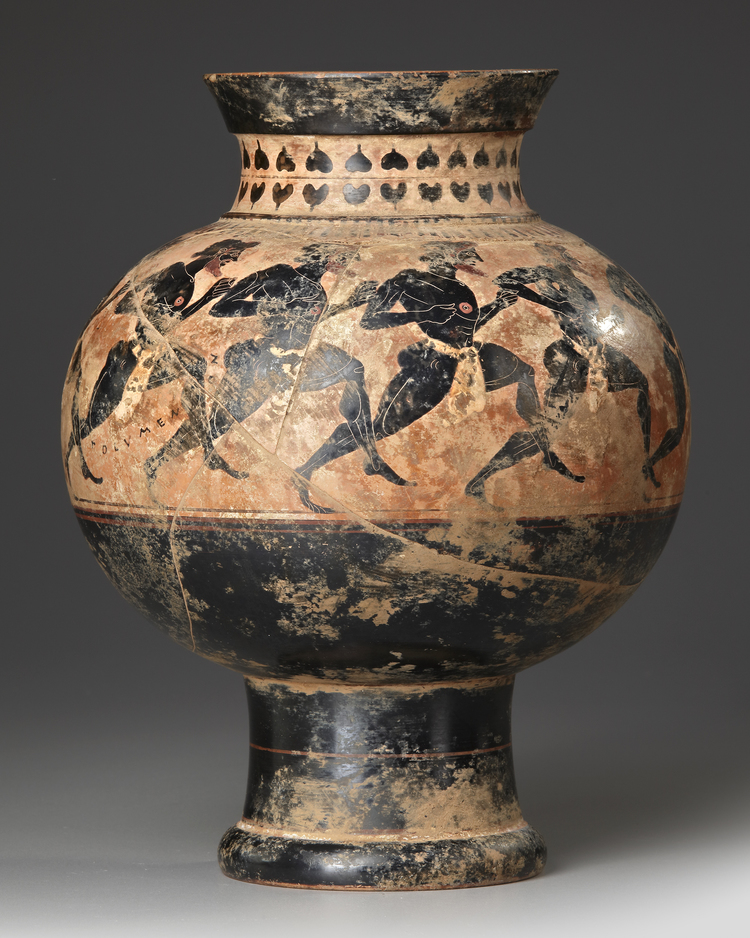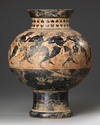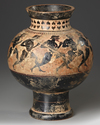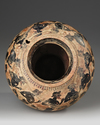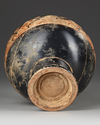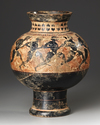Lot 406 AN ATTIC BLACK FIGURE HYDRIA DEPICTING AN ATHLETIC FOOTRACE
This is a well-preserved example of an ancient Greek black-figure hydria, a type of vessel commonly used for carrying water. The hydria is characterized by its wide body, narrow neck, and a flared mouth. It features a rich, lustrous black glaze contrasted against the natural red hue of the terracotta, indicative of the iconic black-figure technique.
The main decorative scene, encircling the body of the vessel, depicts a dynamic footrace, possibly illustrating the Panathenaic Games or another athletic event. The figures are rendered in detailed silhouette, their musculature and garments accentuated by incised lines and added red and white pigments. Each runner is shown in profile with a sense of movement, their limbs bent and extended, capturing the athletic prowess celebrated in Greek culture. Above the race scene, a band of stylized ivy leaves decorates the neck of the vessel, a common motif symbolizing Dionysus, the god of wine and festivity.
Height 27.5 cm.
Despite areas of wear and surface abrasions, the hydria remains structurally intact. The painting is slightly faded but still reveals the skillful hand of the artist. This vessel exemplifies the combination of artistic beauty and functional design characteristic of Greek pottery and would have been a prized object in both domestic and ceremonial contexts.
PROVENANCE
Private collection, Germany before 1990
